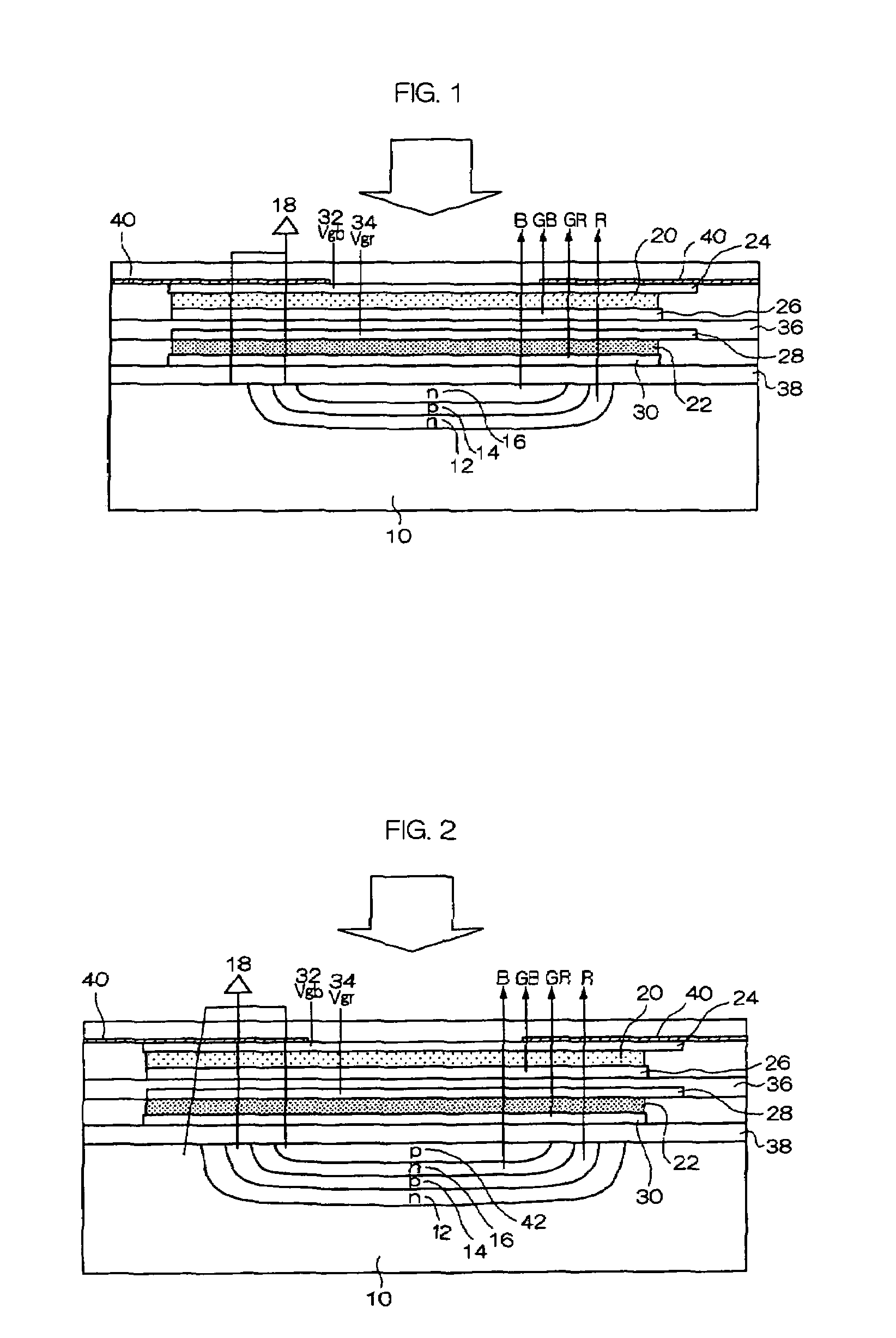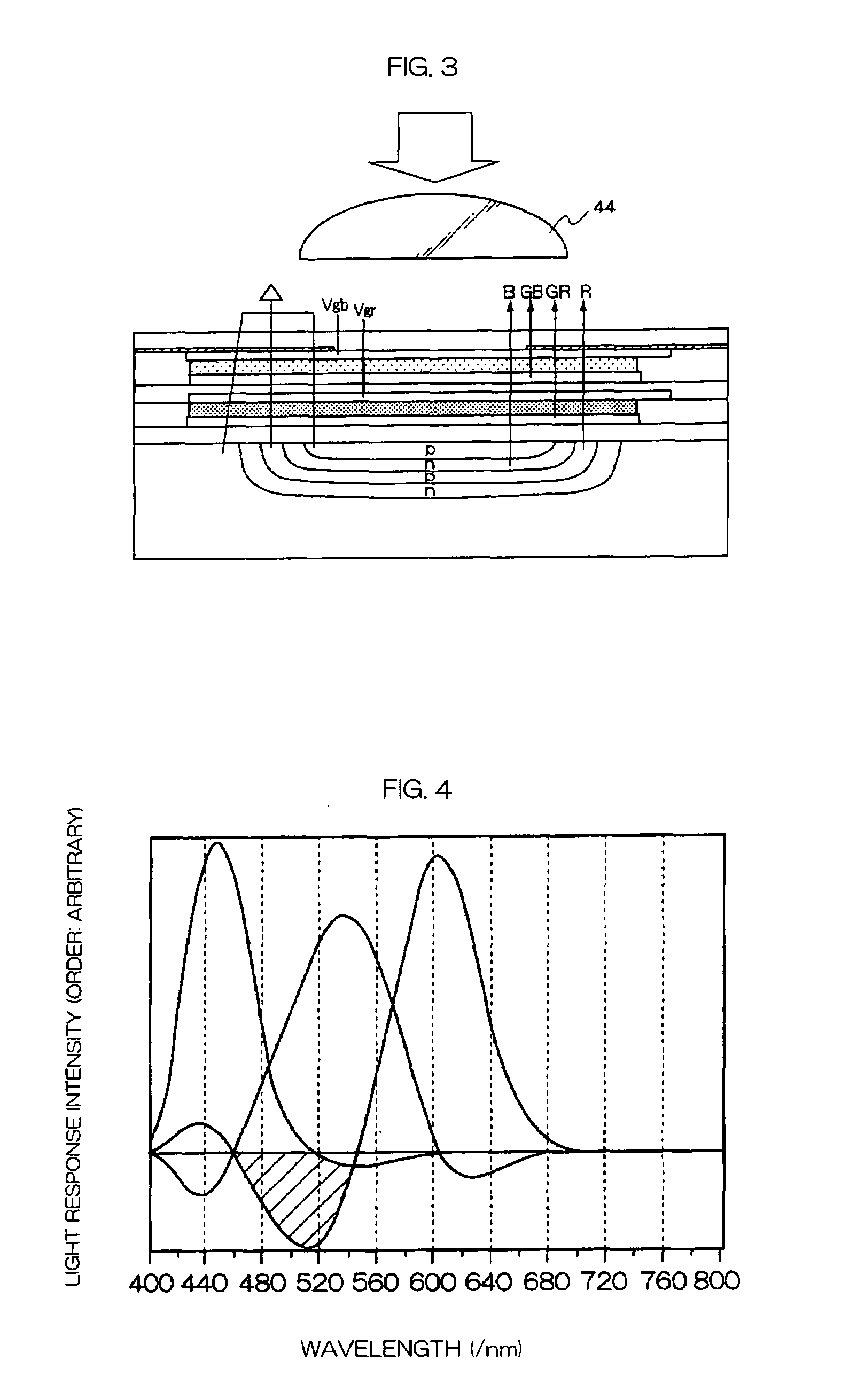Color light receiving device and image pickup device
a pickup device and color light technology, applied in the direction of radio frequency control devices, television system scanning details, television systems, etc., can solve the problems of false color production, sensitivity being lowered, single-plate methods having several problems, etc., and achieve the effect of sufficient color separation
- Summary
- Abstract
- Description
- Claims
- Application Information
AI Technical Summary
Benefits of technology
Problems solved by technology
Method used
Image
Examples
example 1
Light Receiving Device Manufacturing
[0090]A npnp junction diode, as shown in FIG. 2, is formed and, as light receiving devices, on an outside part of the light entering side of a silicon substrate a first photoelectric conversion part and a second photoelectric conversion part are formed. The spectral sensitivity is then evaluated.
[0091]On the silicon substrate are alternately multiple stacked, from the light entering side, a p-type region of first photoelectric conversion part, and an n-type region of a second photoelectric conversion part, being of an opposite conductivity type to the first photoelectric conversion part. The respective depths of the pn junctions of the silicon substrate are made 0.151 μm, 0.20 μm, 1.3 μm, and 2.4 μm. The doping densities are, in order from the light entering side, made 1×1018 cm31 (p), 5×1017 cm−3 (n), 1×1017 cm−3 (p), 1×1016 cm−3 (n), and 1×1015 cm−3 (p-type substrate).
First Photoelectric Conversion Part
[0092]The depletion layers formed of p-n ju...
example 2
[0098]The light receiving device of Example 1 is used, and the second signal calculation is carried out as shown below.
Second Signal Calculation
Ib″=Ib−0.03 Ig−0.23 Ir
Ig″=−0.08 Ib+0.35 Ig−0.08 Ir+0.4 Igb
Ir″=−0.015 Ib+Ir−0.25 Igb
[0099]Here Ib″, Ig″ and Ir″ are respectively the strengths of the blue, green and red signals calculated for Example 1 which have been additionally corrected. Normally, when such a matrix method of calculation is carried out for signals, noise is not calculated sufficiently and S / N ratio is reduced. However, since in the invention the RGB color separation is superior, the non-diagonal elements (coefficients of Ig and Ir which occur in Ib″, the coefficients of Ib and Ir which occur in Ig″, and the coefficients of Ib and Ig which occur in Ir″) are sufficiently small, and without a large reduction in the S / N ratio all of the negative spectral sensitivity can be realized.
[0100]The corrected blue, green and red signal strengths according to this calculation are sho...
PUM
 Login to View More
Login to View More Abstract
Description
Claims
Application Information
 Login to View More
Login to View More - R&D
- Intellectual Property
- Life Sciences
- Materials
- Tech Scout
- Unparalleled Data Quality
- Higher Quality Content
- 60% Fewer Hallucinations
Browse by: Latest US Patents, China's latest patents, Technical Efficacy Thesaurus, Application Domain, Technology Topic, Popular Technical Reports.
© 2025 PatSnap. All rights reserved.Legal|Privacy policy|Modern Slavery Act Transparency Statement|Sitemap|About US| Contact US: help@patsnap.com



